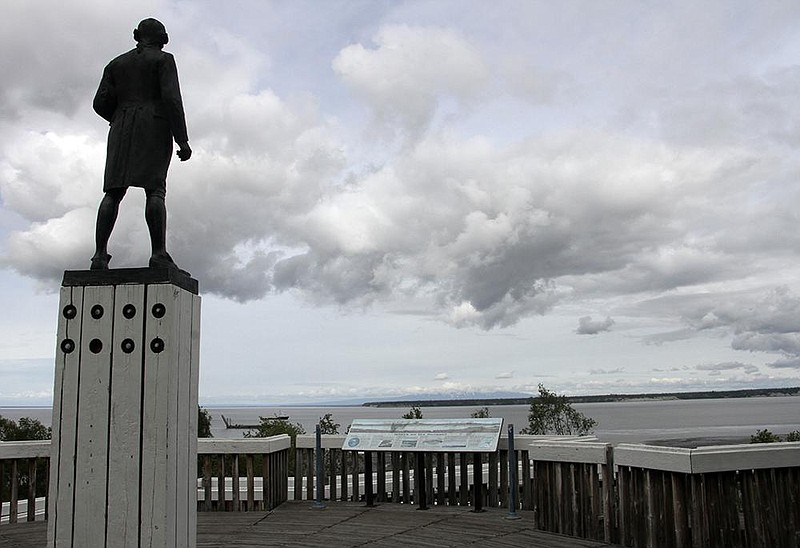As many in the Lower 48 call for statues of Confederate leaders to be removed amid a national reckoning on race, some Alaska residents are conducting a similar movement demanding statues tied to colonization be eliminated or relocated.
A statue of Russian colonialist Alexander Baranov will be taken out of public view in one city and petitions are circulating calling for the removal of statues dedicated to former U.S. Secretary of State and Alaska Purchase architect William Seward and Capt. James Cook, who has been credited with discovering land already inhabited by Indigenous people.
Indigenous people and others who signed petitions to remove those statues perceive them as symbols of colonialism, oppression and white supremacy, said Rosita Worl, president of the Sealaska Heritage Institute, a nonprofit group promoting Native cultures in Southeast Alaska including the Tlingit, Haida and Tsimshian tribes.
"The history of their legacies with the expropriation of Indigenous lands and resources, the suppression and eradication of Native cultures and societies, and the resulting damage and intergenerational trauma experienced by Native Peoples are ignored and not recounted in history," Worl said.
The Sitka Assembly voted July 14 to relocate the statue of Baranov, who founded the city in 1804 -- on a site already inhabited by Alaska Natives -- while serving as chief manager of the fur trading Russian-American Co. During his time as the governor of Russian America, Baranov was known as a brutal colonialist who murdered and enslaved Alaska Native people before the United States purchased Alaska from Russia in 1867.
The statue was vandalized just before its dedication in 1989 and has been criticized in newspaper letters and online posts for years.
[Gallery not loading above? Click here for more photos » arkansasonline.com/727alaska/]
The life-size sculpture will move 40 yards from its outdoor, seated perch to the museum in the Harrigan Centennial Hall, said Sitka Historical Society Museum Executive Director Hal Spackman. He said the relocation "promotes a respectful compromise in a difficult, somewhat divisive discussion."
The Sitka Tribe of Alaska Tribal Council on July 1 passed a resolution backing the relocation while stressing public spaces should exemplify the city's diversity. Sitka "should lead with our nationally recognized voice as a leader in wellness, reconciliation and healing," the resolution said.
Louise Brady, a 64-year-old Tlingit and one of more than 4,400 members of the Sitka Tribe, believes residents should decide which statues are erected in communities. Brady said colonialism is the "root cause of historical trauma found throughout the tribes in Alaska" and underlies many social issues facing Alaska Native communities.
Joel Davidson, editor of Alaska Watchman, a conservative online news website, said the removal of historic monuments is "part of a much larger movement to deface and eliminate references to white European men who have contributed to the historic, scientific and cultural past of America."
"No one claims they were perfect," said Davidson. "They were men of their times and could scarcely comprehend our rapidly changing contemporary views about sexuality, gender, race and multiculturalism. ... There are no perfect heroes -- on the left or the right."


